Verily, verily, I say unto thee, with powder on my nose and makeup to hide my 4 o’clock shadow…
Joe Johnson, from Mega Churches, via

Regina Hackett takes her Art to Go
Verily, verily, I say unto thee, with powder on my nose and makeup to hide my 4 o’clock shadow…
Joe Johnson, from Mega Churches, via

Tract homes in America are cookie cut, but slums in the Third World are hand made.
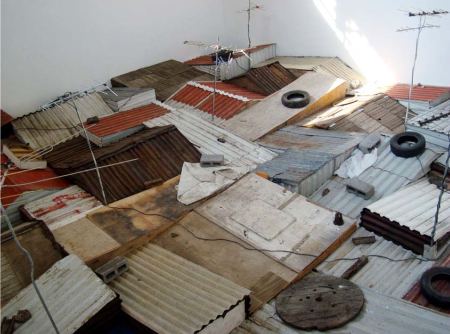 Kader Attia’s installation Kasbah is in Los de Arriba y Los de Abajo at Sala de Arte Publico Siqeiros in Mexico City, through Jan. 10.
Kader Attia’s installation Kasbah is in Los de Arriba y Los de Abajo at Sala de Arte Publico Siqeiros in Mexico City, through Jan. 10.
Attia’s piece reminds me of what David Hammons called negritude architecture.
I JUST LOVE THE HOUSES IN THE SOUTH, THE WAY THEY BUILT THEM. THAT NEGRITUDE ARCHITECTURE. I REALLY LOVE TO WATCH THE WAY BLACK PEOPLE MAKE THINGS, HOUSES OR MAGAZINE STANDS IN HARLEM, FOR INSTANCE. JUST THE WAY WE USE CARPENTRY. NOTHING FITS, BUT EVERYTHING WORKS. THE DOOR CLOSES, IT KEEPS THINGS FROM COMING THROUGH. BUT IT DOESN’T HAVE THAT NEATNESS ABOUT IT, THE WAY WHITE PEOPLE PUT THINGS TOGETHER; EVERYTHING IS A THIRTY-SECOND OF AN INCH OFF. (more)
Best of 3 has the best take on the news that Shaquille O’Neale will co-curate a show titled, Size Does Matter:
It would be so easy to just poke fun, or dismiss this as a publicity stunt. But you know what? The sun’s shining, I’m feeling generous, and I’m going to say that maybe Shaquille O’Neale has a genuine interest in art and his co-curation of a show for the Flag Art Foundation is a mutually enjoyable and beneficial enterprise.
Titled ‘Size Does Matter’,
the show has a line up of artists who I wouldn’t kick out of the
gallery for eating crackers, including Maurizio Cattelan, Chuck Close,
Andreas Gursky, Jeff Koons and – of course – a big naked guy from Ron
Mueck (on loan from the Hirshhorn). In an icing-on-the-PR-cake move, the catalogue features an essay by (in)famous author James Frey.
It is a stretch to think O’Neale would find anything to admire in a man who cowers in a corner. (Image via Hirshhorn) Museum publicity stunt? These are desperate times, Mrs. Lovett.
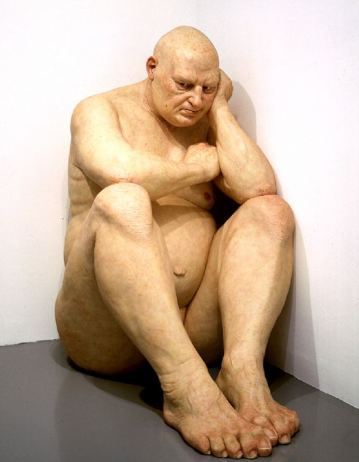 Carol Diehl has a roundup on her blog, which is suitably titled Art Vent, of critics going sexist-berserk. I’ve been reading on other blogs various snippets from Blake Gopnik’s Washington Post review of Anne
Carol Diehl has a roundup on her blog, which is suitably titled Art Vent, of critics going sexist-berserk. I’ve been reading on other blogs various snippets from Blake Gopnik’s Washington Post review of Anne Truit Truitt, all making him sound goofy. But when Diehl called his piece “the most scathing and sexist writing I’ve ever encountered about an artist,” I finally clicked over to the Post to read it.
Sexist? Not even a little bit. It’s jaunty, and jaunty doesn’t work if a few pushing-the-edge sentences are plucked from the whole. I found it insightful, especially this part:
When Jasper Johns and others had found the abstract in the ordinary, Truitt
seems to find the everyday in the abstract — a much stranger thing to
do.
Knocking Blake Gopnik is the art bloggers’ national sport. He has written a few things that made my eyes pop (Exhibit A here), but he startles not because he’s a fool but because he’s trying to enliven what his editors might well feel is the stale form of the art review.
Editors at newspapers rarely appreciate reviews. Gopnik is working to interest them in his, them and presumably other people who do not think of themselves as part of the art world. Anyone pushing a boundary is going to fail on occasion, but he does not fail Truitt.
As for Charlie Finch, whom Diehl also hangs in her gallery-of-shame for his sexist post on Triutt, also no. He’s Truitt’s son-in-law. (We know this because he titled his piece, “Mother-in-Law.”) His point of view is personal and affectionate, ending with:
The Hirshhorn retrospective should vault her into a special pantheon of
her own, one which she occupied in privacy during her own life and in
public now that her work belongs to the world.
What a canine. Did Gloria Steinem march in vain? Women artists can’t get a break. His fellow dog, Blake Gopnik, called Truitt a genius. It’s a wonder women don’t riot in the streets.
Sean Flood, 3 Deka, oil/canvas. With relatives living on all three floors and holy water in the parlor. I was born in Boston. Were it not for the restless mobility (and dread) of my parents, I might be there still, as I tend to bloom where I’m planted.
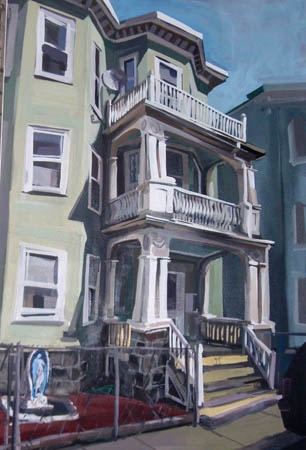
has her own light. (Via)
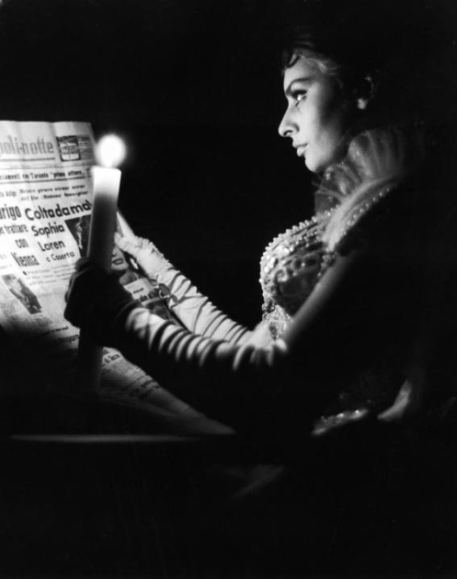
Kenny and rives travel to ask a single question: What do you want to do before you die? They ask participants to write the answers on a Polaroid portrait, which they post on their Web site. (via)
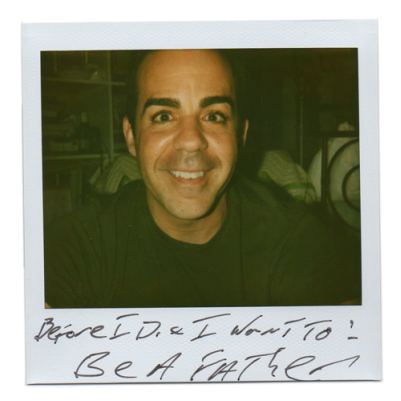
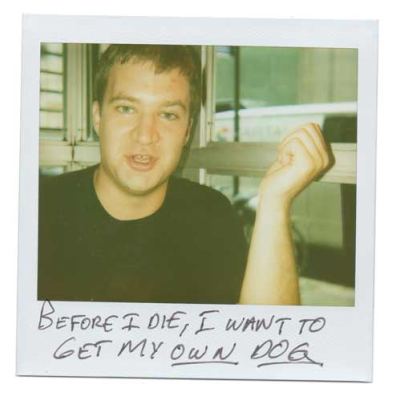
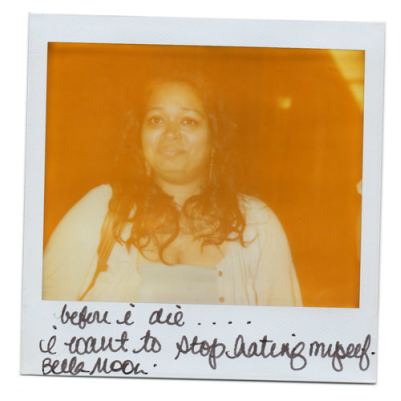
Gillian Wearing, from Signs that say what you want them to say and not signs that say what someone else wants you to say, 1992-93
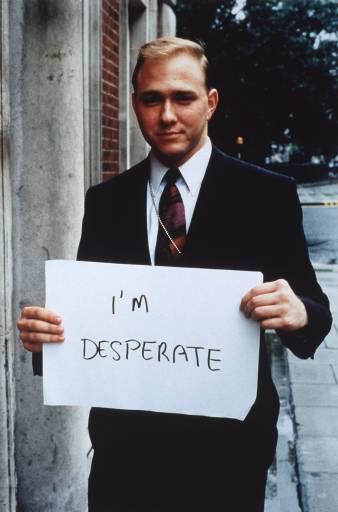 Jim Goldberg, We are a very emotional and tight family, 1979
Jim Goldberg, We are a very emotional and tight family, 1979  Recently in Seattle at a reputable space I saw a video in which the voices didn’t match the subjects. Again, Gillian Wearing. Her 10-16 was at the Henry Gallery in 2003. Remember the only joke in Pulp Fiction? Catch up.
Recently in Seattle at a reputable space I saw a video in which the voices didn’t match the subjects. Again, Gillian Wearing. Her 10-16 was at the Henry Gallery in 2003. Remember the only joke in Pulp Fiction? Catch up.
Heather Cook, 2008, via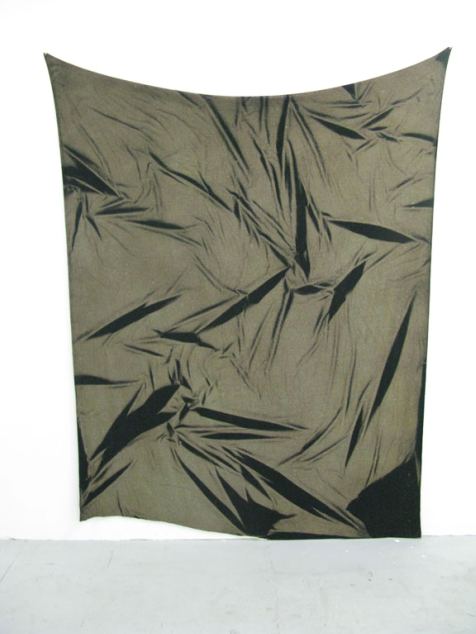 The brothers Eli Hansen & Oscar Tuazon, Tent, 2008
The brothers Eli Hansen & Oscar Tuazon, Tent, 2008
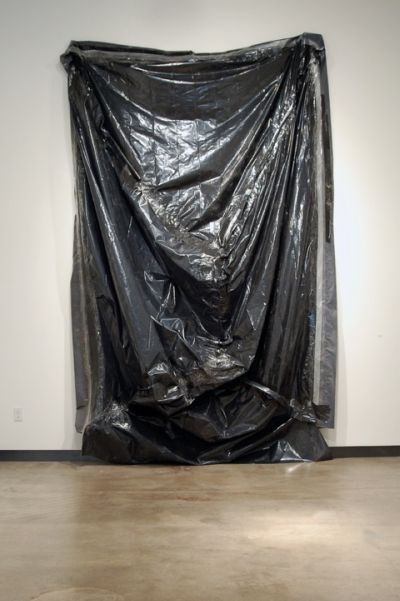
In the art world, there’s a remarkable outpouring of support for U.S. soldiers fighting on two fronts. Their government under Bush & Cheney lied its way into Iraq. Afghanistan was an afterthought. However justified a military response might have been for the latter, the result is a mess. Increasingly, the idea that there are better ways to win hearts and minds is gaining ground.
In the late 1960s, soldiers coming home from Vietnam rarely found anything but contempt from artists addressing the war. (He’s the universal solider and he really is to blame.) Forty years later, anti-war sentiment among artists is as strong as it was then, but denunciations of soldiers are rare.
Below, a sample of what’s out there, from the U.S. and beyond.
An-my Le, from 29 Palms, 2003-present. (Image via)
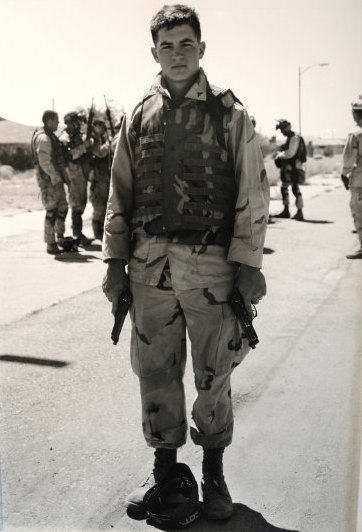 Eli Wright, from the Combat Paper Project, 2009
Eli Wright, from the Combat Paper Project, 2009
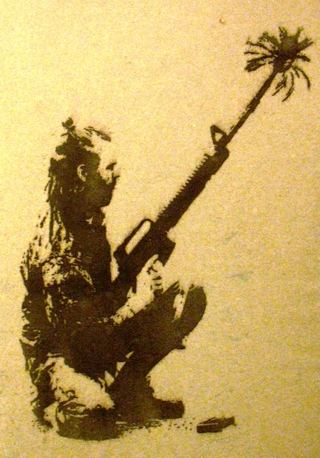 Jon Michael Turner, from the Combat Paper Project, 2008
Jon Michael Turner, from the Combat Paper Project, 2008
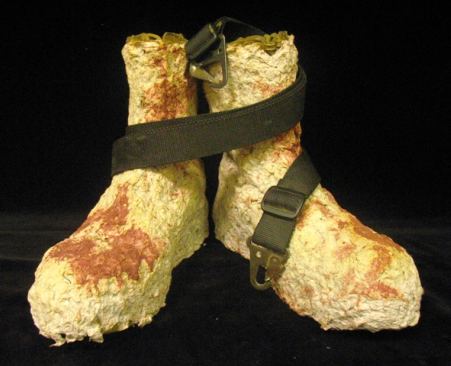 Emily Prince, from her series, American Servicemen and Women Who Have Died in Iraq and Afghanistan. Included by Robert Storr in his 2007 Venice Biennial.
Emily Prince, from her series, American Servicemen and Women Who Have Died in Iraq and Afghanistan. Included by Robert Storr in his 2007 Venice Biennial.
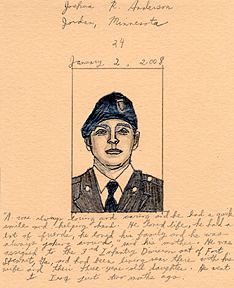 Prince:
Prince:
The numbers
kept coming up in the daily reports. Five here, fourteen there,
one day after another. And then the growing figure mounting
over a thousand. Peripherally it was ever-present, but still
only an abstraction. It was no longer enough to know how many.
I needed to see pictures of them, to familiarize myself just
a tiny bit more with what was happening far from my warm home.
And it really isn’t much. It too is a mere summary, just
one more step beyond bare numbers.
Yet for me it is something. It means spending time with each
one. It is looking into their eyes to see who is now gone. It
is following the line of their brow and trying to perceive the
expression there. It is a visual and visceral exploration of
these individuals by way of their faces. It is my own eyes and
my hand tracing out some very slight acquaintance with what’s
occurring.
Krzysztof Wodiczko, The Veterans’ Project, 2009, ICA Boston
Wodiczko to Boston Globe art critic Sebastian Smee:
“The work I have made so far about veterans has been kind of ‘out
there.’ I want this one to be more about ‘in here,’ ” he says, tapping
his head.(more)
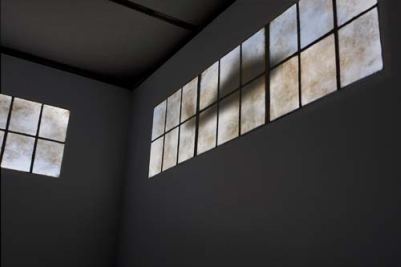 Eros Hoagland, from Soldiers Fighting Our War In Iraq, ongoing. Eros is the son of famed war photographer John Hoagland, who died in El Salvador in 1984. He was 36.The bullet that killed him was U.S. Army issued.
Eros Hoagland, from Soldiers Fighting Our War In Iraq, ongoing. Eros is the son of famed war photographer John Hoagland, who died in El Salvador in 1984. He was 36.The bullet that killed him was U.S. Army issued.
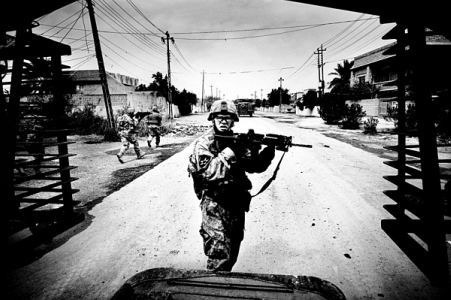
The two best art critics still employed by a U.S. newspaper who don’t work for the New York Times are both in California: Christopher Knight at the LA Times and Kenneth Baker at the SF Chronicle.
There are no art critics on staff at daily newspapers in Seattle, Chicago, Miami, Dallas and Houston, among others. The admirable Douglas Britt works for the Houston Chronicle on contract. Even though he has the output of two staffers and has brought the paper back into the national discussion, the Chronicle has not said it will restore the position.
A newspaper art critic differs from colleagues at art magazines in one essential, and it’s not that the former is less savvy than the latter, although that is frequently the case. A critic at the newspaper aspires to a general audience. The chance to hook somebody with a review who’s flipping pages to get somewhere else is tantalizing.
Without newspapers, those accidents appear to be less likely to happen, but there is more depth and range in each separate field, with Web sites available to run on a constant scroll across the face of cell phones.
In that context, art coverage in Golden State newspapers remains golden.
Here’s Knight on MoCA. As ever he’s making the case for Los Angeles:
But this is not just a promotional treasure-house show. Installed
chronologically by chief curator Paul Schimmel, it also tells a story —
although one that’s rarely heard. The postwar rise of American art is
paired with the simultaneous rise of Los Angeles, from shallow
backwater to cultural powerhouse. (more)
Kenneth Baker is more detached. He makes his case artist by artist and doesn’t care about regional positioning:
[Read more…] about Newspapers with art critics: California shines
By giving to and buying from Suyama Space‘s garage sale. Donated objects include fancy chairs, tables, china, fiesta ware, silver, architectural accessories, toys, tiles, textiles, art objects and antiques.
Drop off contributions at 2324 Second Ave. till Dec. 1. Need pick up? Call 206-256-0809. Sale Dec. 5, 9 a.m.-5 p.m.
Sample wares:
an ArtsJournal blog


